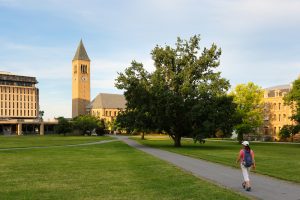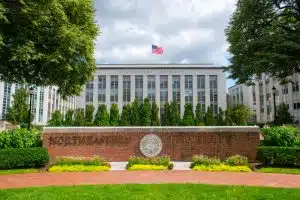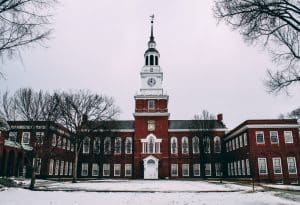Cornell Traditions
Cornell University is not simply an Ivy League institution known for its revered courses and high-octane intellectual culture. It is also a hub of vibrant traditions that are testament to its distinct and rich history, traditions that capture the essence of its founding principles and its spirited student life. In this article, we’ll delve into the roots of Cornell traditions and explore their significance in the university’s contemporary culture.
The Historical Roots of Cornell’s Traditions
Any exploration into Cornell’s traditions would be incomplete without a look at its historical roots. The traditions of Cornell are founded on the principles upon which this esteemed educational institution was built. These principles have manifested themselves in various forms, permeating student life and creating an atmosphere that sets Cornell apart from other universities.
When we delve into the historical roots of Cornell’s traditions, we uncover a rich tapestry of values and beliefs that have shaped the university’s identity. These traditions are not mere customs; they are a reflection of the visionary founders and the enduring legacy they left behind.
The Founding Principles and Their Influence
The founding principles of Cornell University have played a crucial role in shaping its unique traditions. Ezra Cornell and Andrew Dickson White, the university’s founders, believed in creating an institution where “any person can find instruction in any study”. This belief has inspired many of the university’s traditions, allowing for a diverse range of activities that celebrate the intellectual curiosity and social engagement of its students.
One of the most notable traditions influenced by these founding principles is the “Open Doors” event, where students from different disciplines open their doors to showcase their research and projects. This tradition embodies the spirit of interdisciplinary collaboration and the belief that knowledge knows no boundaries.
Moreover, Cornell’s traditions have also been influenced by its commitment to public engagement and positive societal impact. This ethos has translated into traditions that foster community spirit and encourage rich intellectual conversations.
An example of such a tradition is the “Day of Service”, where students, faculty, and staff come together to volunteer in the local community. This tradition not only demonstrates Cornell’s dedication to public service but also strengthens the bond between the university and its surrounding neighborhoods.
Evolution of Traditions Over the Years
As the university has evolved over the years, so have its traditions. Traditions at Cornell are not static relics of the past. Rather, they transform, adapting to the changing times and student preferences, while always staying true to the founding principles of the university.
For instance, some traditions have been adapted to be more inclusive and representative of Cornell’s diverse student body. The “Unity Walk”, originally a celebration of the university’s founding, has evolved into a multicultural event that showcases the vibrant tapestry of cultures and backgrounds within the Cornell community.
Others have evolved in their execution, in response to changes in societal norms and expectations. The “Slope Day” tradition, once known for its raucous festivities, has been reimagined as a day of relaxation and celebration before final exams, with live music performances and recreational activities.
Nevertheless, at their core, these traditions remain a celebration of Cornell’s unique community spirit and its commitment to intellectual rigor, social engagement, and public service. They serve as a reminder of the university’s rich history and the enduring values that continue to shape Cornell’s identity.
The Dragon Day Tradition
Among the rich tapestry of traditions at Cornell University, Dragon Day stands out. It is an annual event that occurs in the spring, just before the university’s spring break.
The Significance of Dragon Day
Dragon Day at Cornell originates from a friendly rivalry between the university’s College of Architecture, Art, and Planning (AAP) and the College of Engineering. This rivalry is symbolized through this celebration, where the students of AAP construct an elaborate dragon and parade it around the campus as part of a creative and unique celebration of architectural design and creativity.
The Dragon Day tradition holds deep significance for the students of AAP. It not only showcases their talent and passion for architecture but also serves as a platform for them to express their artistic vision and innovative ideas. The dragon itself represents the embodiment of their collective imagination, brought to life through meticulous planning and craftsmanship.
While Dragon Day is primarily an AAP tradition, it invites participation from the entire Cornell community. In this sense, it serves to foster unity and mutual admiration among the students of different departments while also adding a flavor of competitiveness. The event brings together students, faculty, and staff from various disciplines, creating an atmosphere of camaraderie and celebration.
How Dragon Day is Celebrated
The Dragon Day celebration commences with the unveiling of the dragon, built by the first-year architecture students. This moment is filled with anticipation and excitement as the intricate details and artistic brilliance of the dragon are revealed to the eager onlookers. The dragon, a magnificent creature made of various materials, stands as a testament to the students’ dedication and creativity.
As the dragon is paraded around the campus, it becomes a spectacle that captivates the entire Cornell community. The vibrant colors and intricate design of the dragon attract attention from all corners, drawing people to witness this unique display of architectural prowess. The procession that follows the dragon includes students, faculty, and staff, all joining in the celebration and adding to the grandeur of the event.
Simultaneously, engineering students construct a Phoenix to counter the dragon, advocating the spirit of resilience and continuous growth. The Phoenix, rising from the ashes, symbolizes the ability to overcome challenges and embrace change. This dynamic interaction between the dragon and the Phoenix represents the harmonious coexistence of creativity and innovation, highlighting the collaborative spirit that exists within the Cornell community.
This vibrant show culminates in a ceremonial ‘burning’ of the dragon, symbolizing renewal and the eternal cycle of creation and destruction. The dragon, which has served as a source of inspiration and admiration throughout the day, now transforms into a metaphorical representation of rebirth. The flames engulfing the dragon signify the release of its creative energy, paving the way for new ideas and possibilities.
Dragon Day at Cornell University is not just a tradition; it is a celebration of the human spirit, artistic expression, and the power of collaboration. It brings together individuals from diverse backgrounds, fostering a sense of community and appreciation for the creative endeavors of the students. The Dragon Day tradition continues to thrive, inspiring future generations to push the boundaries of architectural design and celebrate the beauty of collective imagination.
The Slope Day Tradition
Another cornerstone of Cornell’s student life is the annual Slope Day, a much-anticipated springtime celebration. Originating as a day of feasting in commemoration of Cornell’s charter day, Slope Day has evolved into a grand university-wide concert, providing a much-needed respite from academic rigor.
The History of Slope Day
Slope Day dates back to the late 19th century when students celebrated ‘Spring Day’ with picnics and outdoor sports. Over time, the tradition has evolved and taken shape as the Slope Day we know today – a day of music, camaraderie, and celebration of the arrival of spring after the tough Ithaca winters.
During the early years, students would gather on the slopes of Libe Slope, a picturesque hill on campus, to enjoy the festivities. They would bring blankets, food, and games to make the most of the day. As the years went by, the tradition grew in popularity, attracting more and more students who eagerly awaited this annual event.
In the 1960s, Slope Day underwent a transformation. It became a platform for student activism and expression. The music played during the event reflected the social and political climate of the time. Students would gather to listen to folk music and protest songs, using Slope Day as a means to voice their opinions and advocate for change.
The modern form of Slope Day, which includes live performances from renowned musicians, started in the early 2000s. The university recognized the need to adapt to the changing times and cater to the evolving tastes of the student body. Today, Slope Day features a diverse lineup of artists from various genres, ensuring there is something for everyone to enjoy.
Despite its evolution over time, Slope Day has always been a celebration of the Cornell community and a token of appreciation to the students for their hard work. It serves as a reminder that while academics are important, taking a day to relax and enjoy the company of friends is equally crucial for overall well-being.
The Impact of Slope Day on Student Life
While Slope Day provides students with a much-deserved break, it also contributes significantly to uniting the student body. Students from all across the university come together, showcasing the diverse and inclusive nature of Cornell’s community. The atmosphere on Slope Day is one of joy, laughter, and unity as students set aside their differences and bond over shared experiences.
Participating in Slope Day can be a transformative experience for many students. It offers an opportunity to let loose, forget about academic pressures, and create lasting memories. The excitement leading up to the event is palpable, with students eagerly discussing their favorite artists, planning their outfits, and organizing group meet-ups.
On Slope Day, the campus comes alive with vibrant energy. The slopes of Libe Slope are adorned with colorful decorations, and the air is filled with the sounds of music and laughter. Students engage in friendly competitions, play games, and enjoy delicious food from various vendors. It is a day of pure enjoyment and celebration of the Cornell spirit.
Moreover, Slope Day acts as a catalyst for building a sense of belonging within the Cornell community. The shared experience of attending the event creates a bond among students that extends beyond the day itself. It fosters a sense of unity and camaraderie, making students feel like they are part of something bigger than themselves.
In conclusion, Slope Day is not just a day of music and festivities. It is a cherished tradition that holds deep meaning for the Cornell community. It represents the spirit of togetherness, resilience, and celebration. Slope Day is a testament to the vibrant student life at Cornell University and the enduring legacy of this beloved tradition.
The Chimes Tradition
Cornell’s chimes, housed at the top of McGraw Tower, have been an integral part of the university’s tradition since its earliest years. However, they are more than just a source of music – they personify Cornell’s spirit and its commitment to the free exchange of ideas.
The Story Behind the Chimes
The chimes were a gift to the University from trustee and benefactor Jennie McGraw. They have been in continuous use since their installation in 1868, making the Cornell chimes one of the longest-playing sets of bells on any American college campus. The chimes are traditionally played by Cornell’s chimesmasters thrice daily, entertaining the campus with a selection of over two thousand pieces from classical to contemporary music.
The chimesmasters are student volunteers who undergo a rigorous selection process. This symbolizes Cornell University’s dedication to upholding traditions and its firm belief in student participation and leadership.
The Role of the Chimes in Campus Life
The melodious tunes of the chimes are an inseparable part of the Cornell experience. They are a constant reminder of the university’s rich history and tradition. Every time the chimes play, they narrate a story – a story of passion, dedication, and the spirit of Cornell.
The chimes also unite the campus by setting a rhythm to the daily life of students, faculty, and staff. They bring a sense of continuity and stability, providing fond memories for the entire Cornell community long after their time at the university has ended.
The Cornelliana Night Tradition
Cornelliana Night is a beloved tradition of Cornell, which encourages a strong bond among the university’s students, faculty, alumni, and staff. The tradition sparks a sense of unity, nostalgia, and pride for the institution.
Understanding the Cornelliana Night
Cornelliana Night is an annual event that celebrates the spirit of Cornell University. It is a night dedicated to reminiscing about Cornell’s past, appreciating the present, and looking forward to the future. The event features singing performances of traditional Cornell songs, skits, and speeches that reflect upon the University’s history and traditions.
The Role of Cornelliana Night in Fostering Unity
This tradition brings together the old and the new, the alumni and the students, in a celebration of all things Cornell. By merging the different generations of Cornellians, it bridges the gap between the past and the present, fostering a strong sense of community and shared experience.
To conclude, the traditions at Cornell University are as diverse and inspiring as the university itself. They not only represent the core values of this esteemed institution but also create a unique environment that is unrivaled by any other. They inject life into the campus, making Cornell University a truly distinctive institution with a spirit that resonates in every student, alumnus, faculty, and staff.
How AdmissionSight Can Help You With College Admissions
AdmissionSight is a college consulting firm that provides personalized assistance to students throughout the college admissions process. Here are some ways that AdmissionSight can help you:
Admissions strategy: AdmissionSight can help you develop a strategic plan for your college application process. Our professional consultants can assist with identifying schools that are a good fit for your academic, extracurricular, and personal goals and help you plan and prioritize your application strategy.
Application review: AdmissionSight can review your application and provide feedback on how to improve it. We can offer suggestions on making your application stand out and highlighting your strengths and unique qualities.
Essay coaching: AdmissionSight can help you craft compelling essays that showcase your personality, goals, and achievements. We can guide you through the essay writing process and provide feedback on your drafts to help you refine your writing.
Interview preparation: AdmissionSight can provide interview coaching to help you feel confident and prepared for college interviews. Our experts can offer tips on how to present yourself professionally and how to answer common interview questions.
Extracurricular planning: AdmissionSight can help you plan and develop your extracurricular activities to make them more impactful and meaningful. We can suggest activities that align with your interests and goals and provide guidance on demonstrating your leadership and initiative.
Overall, AdmissionSight can provide valuable guidance and support throughout the college admissions process to help you maximize your chances of getting accepted into the college of your choice.
With a high success rate of over 75%, we have built a strong network in the past decade. Book an initial consultation today, free of charge!








































